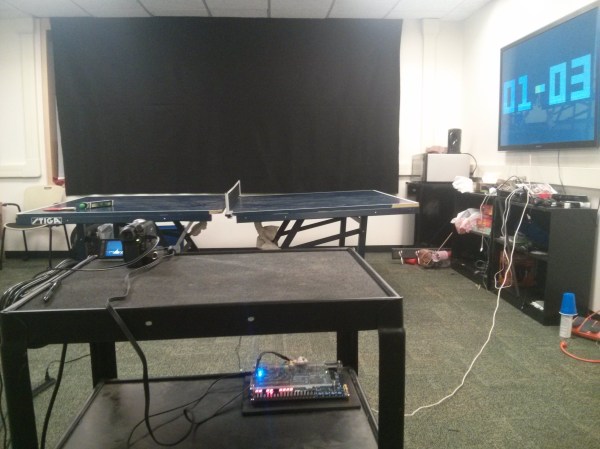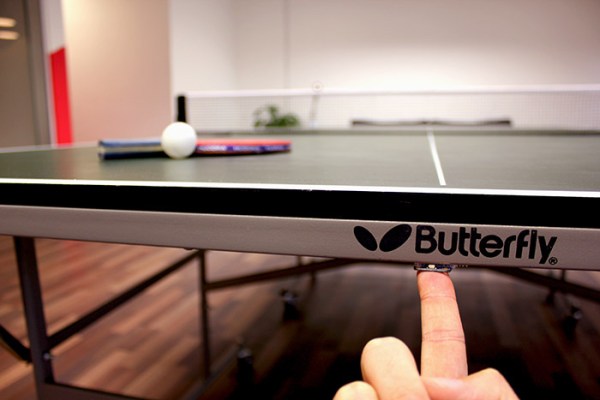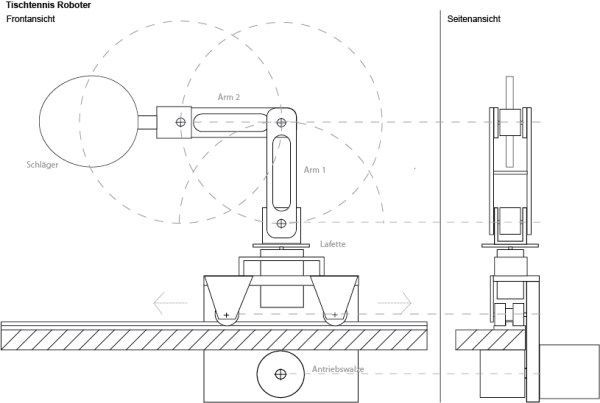Would you like to play a robot in ping pong (translated)? We sure would. Inspired by an upcoming face-off between man and machine, [Jakob] wrote in to tell us about [Ulf Hoffmann’s] ping-pong playing robot. If you ever wanted to play ping-pong when no one else was around or are just sick and tired of playing against the same opponents this project is for you. Boy is this thing amazing; you simply must see the robot in action in the video after the break.
While the robot’s build is not documented all in one post, [Ulf Hoffmann’s] blog has many videos and mini posts about how he went about building the paddle wielding wonder. The build runs the range from first ideas, to hand-drawn sketches, to the technical drawings seen above. From these the parts of the arm were built, but the mechanical assembly is only one portion of the project. It also required software to track the ball and calculate how to properly return it. Be sure to browse through his past posts, there is a wealth of information there.
Also be sure to check in on March 11th to see who wins the epic face-off between man and machine. See the trailer (the second embedded video) after the break.
UPDATE: Many commentators are calling this one a fake. It’s so sad to think that, because this is a really cool project. But we’ve changed the title and are asking you to weigh in on whether you think it is real or fake. We’ve also contacted [Ulf] and asked if it is real hardware, or a CGI enhanced video. We’ll let you know if/when we hear back from him.
Continue reading “Real Or Fake? The Amazing Ping-Pong Robot” →


















